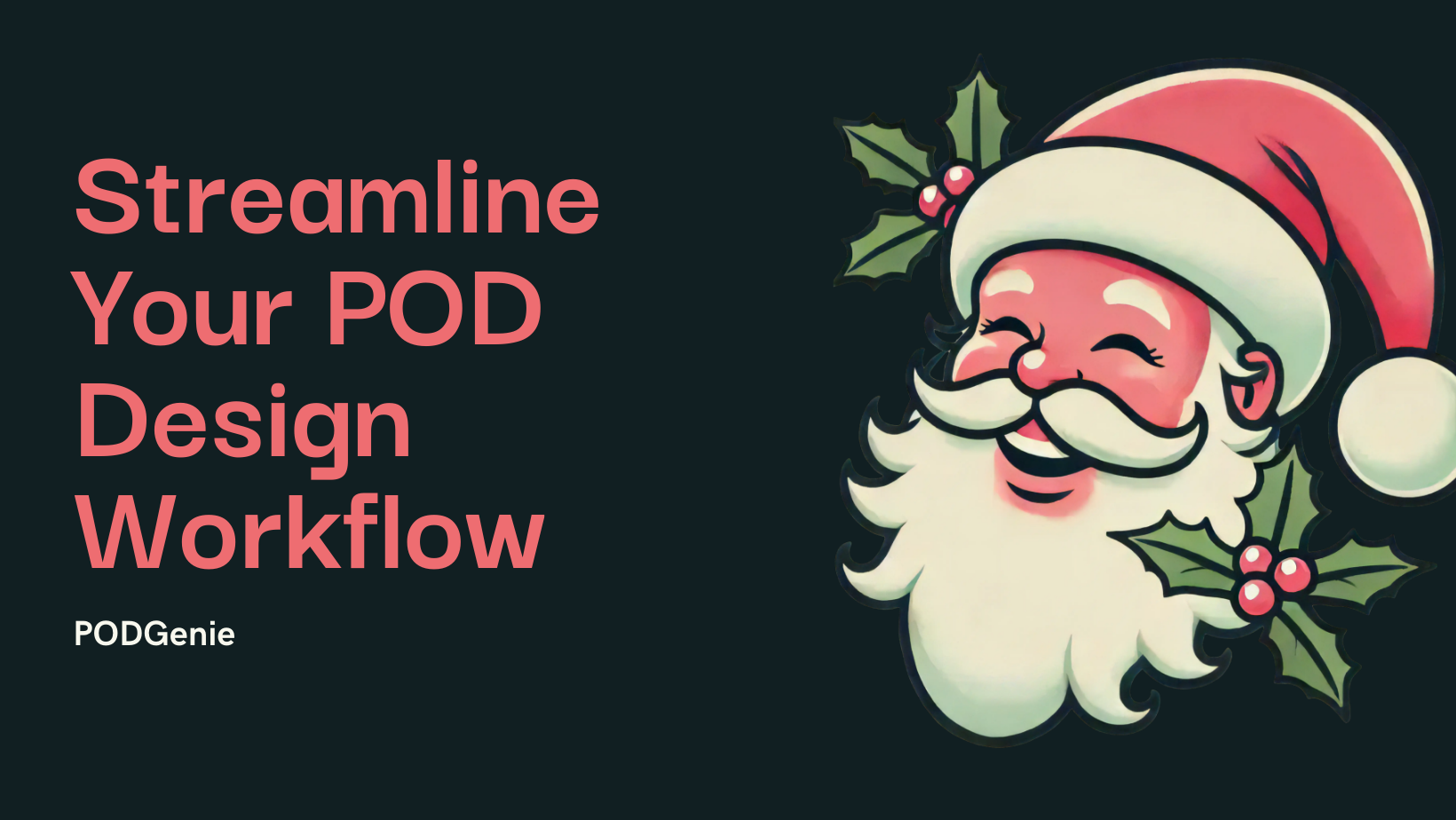PODGenie is an innovative tool built to streamline the creation of Print-On-Demand (POD) designs using ChatGPT’s AI capabilities. For optimal results, understanding how to effectively combine Command Setup (text-based prompts) and Image Setup (design templates) is crucial. By leveraging these features correctly, you can generate multiple creative variations from a single idea, significantly boosting both the efficiency and quality of your designs.
Seamlessly Combining Command Setup and Image Setup
To make the most out of PODGenie, here’s an overview of how the system works:
1. Command Setup
In this section, each line acts as a prompt, guiding ChatGPT in how to generate or modify designs. The system will randomly choose a prompt from your list, such as:
- “Create a new design by changing style and color. No further instructions needed.”
- “Create a new design by changing the subject, without hints.”
- “Create a variation of this design by altering the concept, style, and color.”
You can modify and expand these commands to suit your creative needs, giving you flexibility in automating a variety of design tasks.
2. Image Setup
This section allows you to select a list of image templates. The system will randomly pick an image from this list and pair it with a random prompt from the Command Setup. The combination of prompts and templates enables a wide range of unique designs to be created automatically.
- No images? The system will rely entirely on prompts to generate designs from scratch.
- Providing images? The AI will adjust the design based on the chosen template and prompt.
This setup ensures a diverse and automated workflow, allowing you to produce high-quality designs consistently without needing manual input for each design.
Tips for Optimization:
- Command Variety: Regularly update or add new prompts to the Command Setup to keep designs fresh and relevant to market trends.
- High-Quality Images: Ensure your image files are clear and high-resolution for better design outcomes.
PODGenie’s unique features make it an essential tool for automating your Print-On-Demand business, helping you scale your design output faster while maintaining creative control.
Important Note on Text Content in Designs
Avoid using excessive or complex text in your designs. ChatGPT is not suited for processing long or intricate text, especially when uncommon. Stick to minimal text or common phrases, focusing more on visual elements to allow the AI to generate higher-quality designs.
1. Using Design Templates with General Prompts
When you provide a high-quality design template, PODGenie uses this as a foundation for generating new variations. In this case, general prompts are sufficient, as the design already contains essential information. These prompts help the AI make creative adjustments, producing diverse and random variations.
Requirements for Design Templates:
- High Quality: Clear and sharp designs.
- Minimal Text: Avoid excessive text as the AI struggles with complex textual elements.
- High Resolution: High-res designs result in better outcomes.
Examples of General Prompts with Design Templates:
- “Create a variation of this design by changing the color scheme.”
- “Generate different versions by modifying the style.”
- “Slightly adjust the layout while keeping the core concept intact.”
Using these general prompts allows the AI to adjust colors, styles, and layouts, generating multiple versions of the original design quickly and efficiently.
2. Using Detailed Prompts Without Design Templates
When no design template is provided, the AI will rely entirely on the Command Setup to generate a design from scratch. Here, detailed prompts are essential to guide the AI on style, colors, and theme.
Examples of Detailed Prompts:
- “Create a minimalist design with geometric shapes, using black and white.”
- “Design a floral pattern with pastel colors, featuring roses and lilies.”
- “Generate a travel-themed graphic with airplanes, landmarks, and a blue sky.”
The more detailed your prompt, the better the AI understands and aligns the design with your vision.
3. Combining Prompts and Design Templates
The most effective way to optimize your design creation is by combining both design templates and detailed prompts. The AI uses the template as a foundation and refines or modifies it based on your specific instructions.
Examples of General Prompts with Design Templates:
- “Create variations of this design by changing the color schemes.”
- “Generate different versions by slightly adjusting the layout.”
Examples of Detailed Prompts with Design Templates:
- “Create a variation by applying a watercolor style and using soft blue tones.”
- “Use this image as a base and add floral elements in pastel colors.”
This approach allows for creative and diverse outputs while maintaining accuracy and control over specific design elements.
Conclusion: Optimizing the Design Process with PODGenie
- With Design Templates: General prompts enable the AI to quickly generate variations of your template.
- Without Design Templates: Detailed prompts give you full control, helping the AI create entirely new designs from scratch.
- Combining Both: By using both templates and prompts, you harness the AI’s creative power while retaining precision over design elements.
By following these guidelines, you can optimize the use of Command Setup and Image Setup in PODGenie, producing high-quality, unique designs with greater efficiency. This will enhance both the creative and operational aspects of your POD business, saving time while delivering a wide range of stunning designs.

